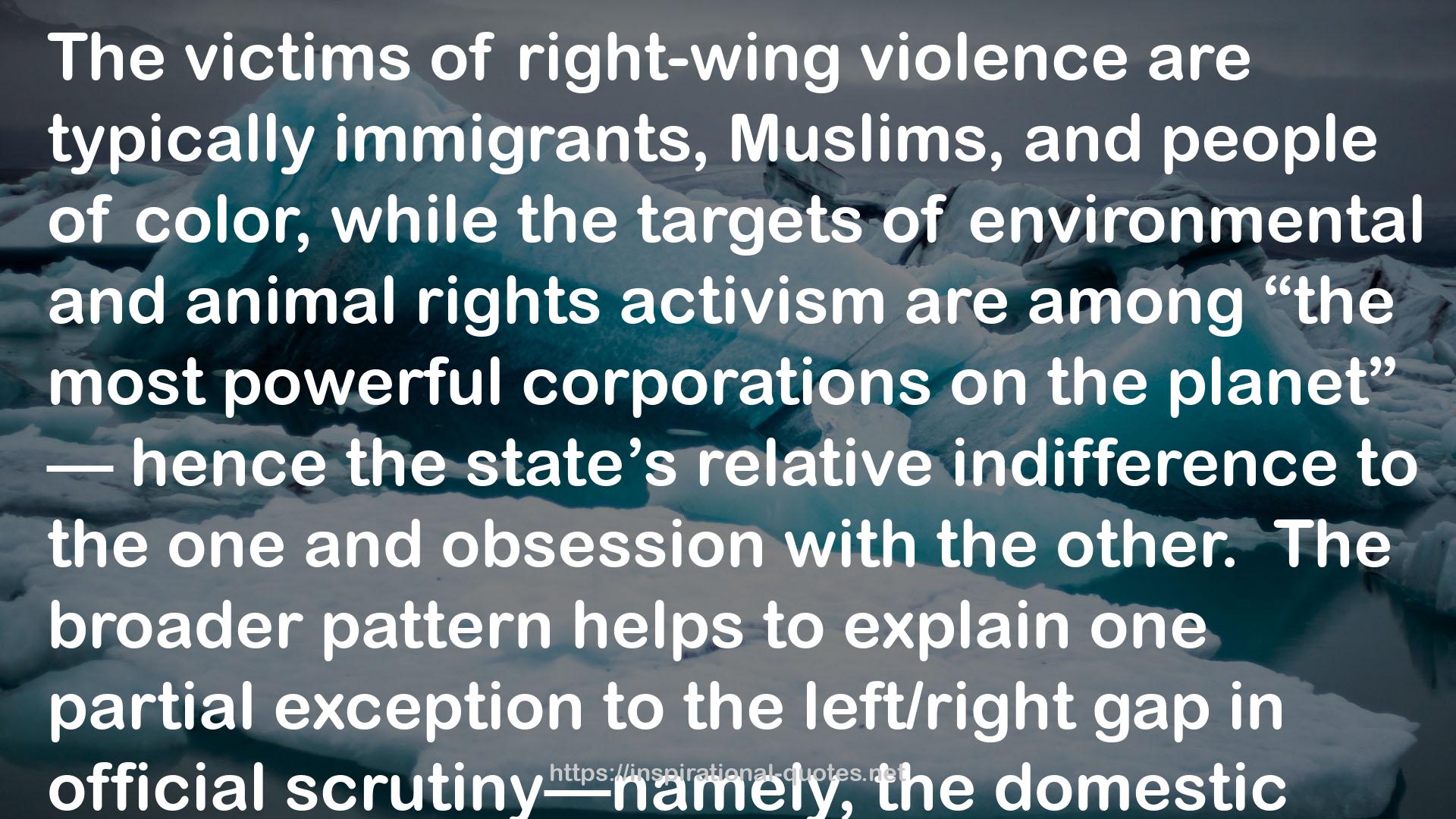" The victims of right-wing violence are typically immigrants, Muslims, and people of color, while the targets of environmental and animal rights activism are among “the most powerful corporations on the planet” — hence the state’s relative indifference to the one and obsession with the other.
The broader pattern helps to explain one partial exception to the left/right gap in official scrutiny—namely, the domestic aspects of the “War on Terror.” Al Qaeda is clearly a reactionary organization. Like much of the American far right, it is theocratic, anti-Semitic, and patriarchal. Like Timothy McVeigh, the 9/11 hijackers attacked symbols of institutional power, killing a great many innocent people to further their cause. But while the state’s bias favors the right over the left, the Islamists were the wrong kind of right-wing fanatic. These right-wing terrorists were foreigners, they were Muslim, and above all they were not white. And so, in retrospect and by comparison, the state’s response to the Oklahoma City bombing seems relatively restrained—short-lived, focused, selectively targeting unlawful behavior for prosecution. The government’s reaction to the September 11th attacks has been something else entirely — an open-ended war fought at home and abroad, using all variety of legal, illegal, and extra-legal military, police, and intelligence tactics, arbitrarily jailing large numbers of people and spying on entire communities of immigrants, Muslims, and Middle Eastern ethnic groups. At the same time, law enforcement was also obsessively pursuing — and sometimes fabricating—cases against environmentalists, animal rights activists, and anarchists while ignoring or obscuring racist violence against people of color. What that shows, I think, is that the left/right imbalance persists, but sometimes other biases matter more. "
― Kristian Williams , Our Enemies in Blue: Police and Power in America
